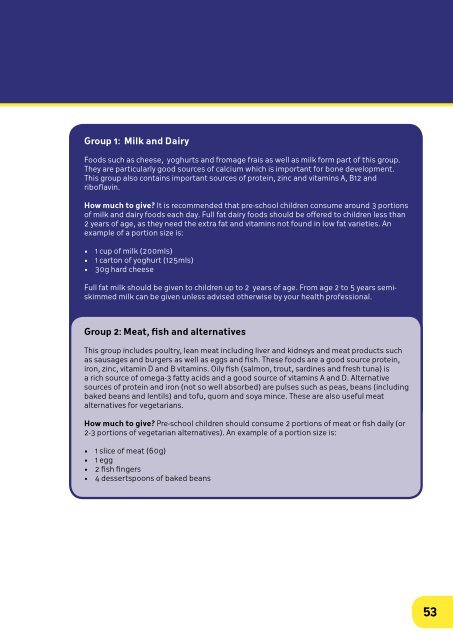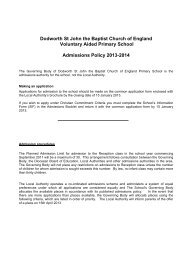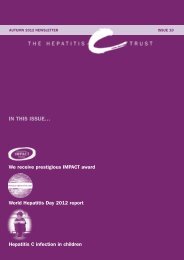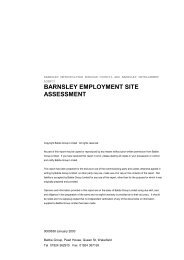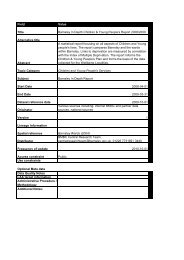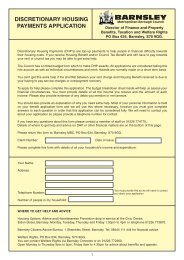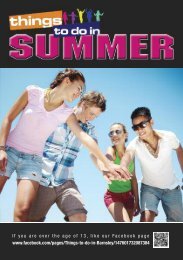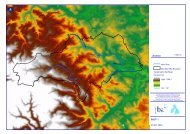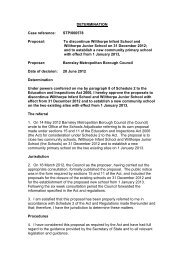Food and Nutrition Guidelines - Barnsley Council Online
Food and Nutrition Guidelines - Barnsley Council Online
Food and Nutrition Guidelines - Barnsley Council Online
You also want an ePaper? Increase the reach of your titles
YUMPU automatically turns print PDFs into web optimized ePapers that Google loves.
Group 1: Milk <strong>and</strong> Dairy<br />
<strong>Food</strong>s such as cheese, yoghurts <strong>and</strong> fromage frais as well as milk form part of this group.<br />
They are particularly good sources of calcium which is important for bone development.<br />
This group also contains important sources of protein, zinc <strong>and</strong> vitamins A, B12 <strong>and</strong><br />
riboflavin.<br />
How much to give? It is recommended that pre-school children consume around 3 portions<br />
of milk <strong>and</strong> dairy foods each day. Full fat dairy foods should be offered to children less than<br />
2 years of age, as they need the extra fat <strong>and</strong> vitamins not found in low fat varieties. An<br />
example of a portion size is:<br />
• 1 cup of milk (200mls)<br />
• 1 carton of yoghurt (125mls)<br />
• 30g hard cheese<br />
Full fat milk should be given to children up to 2 years of age. From age 2 to 5 years semiskimmed<br />
milk can be given unless advised otherwise by your health professional.<br />
Group 2: Meat, fish <strong>and</strong> alternatives<br />
This group includes poultry, lean meat including liver <strong>and</strong> kidneys <strong>and</strong> meat products such<br />
as sausages <strong>and</strong> burgers as well as eggs <strong>and</strong> fish. These foods are a good source protein,<br />
iron, zinc, vitamin D <strong>and</strong> B vitamins. Oily fish (salmon, trout, sardines <strong>and</strong> fresh tuna) is<br />
a rich source of omega-3 fatty acids <strong>and</strong> a good source of vitamins A <strong>and</strong> D. Alternative<br />
sources of protein <strong>and</strong> iron (not so well absorbed) are pulses such as peas, beans (including<br />
baked beans <strong>and</strong> lentils) <strong>and</strong> tofu, quorn <strong>and</strong> soya mince. These are also useful meat<br />
alternatives for vegetarians.<br />
How much to give? Pre-school children should consume 2 portions of meat or fish daily (or<br />
2-3 portions of vegetarian alternatives). An example of a portion size is:<br />
• 1 slice of meat (60g)<br />
• 1 egg<br />
• 2 fish fingers<br />
• 4 dessertspoons of baked beans<br />
53


